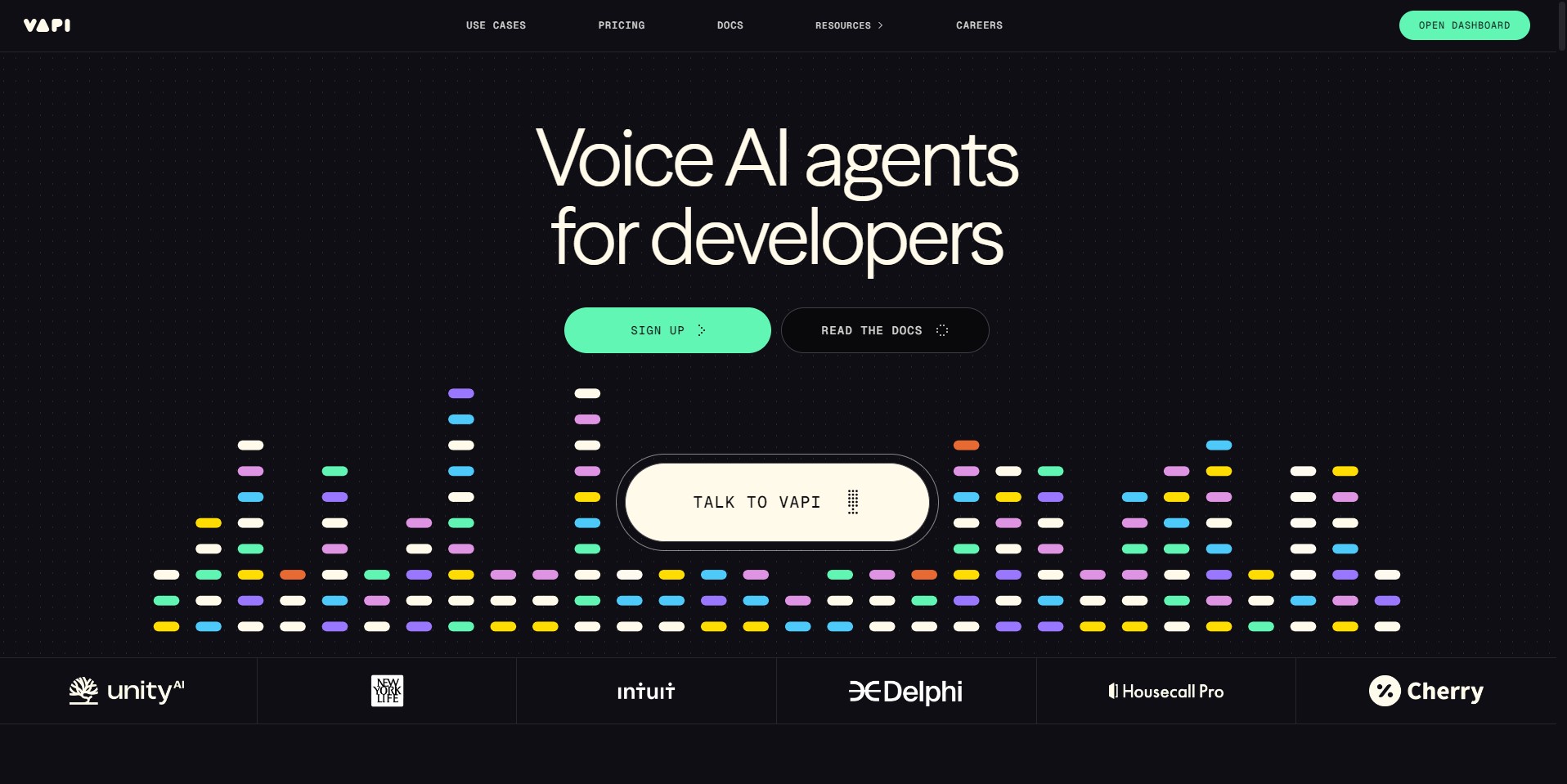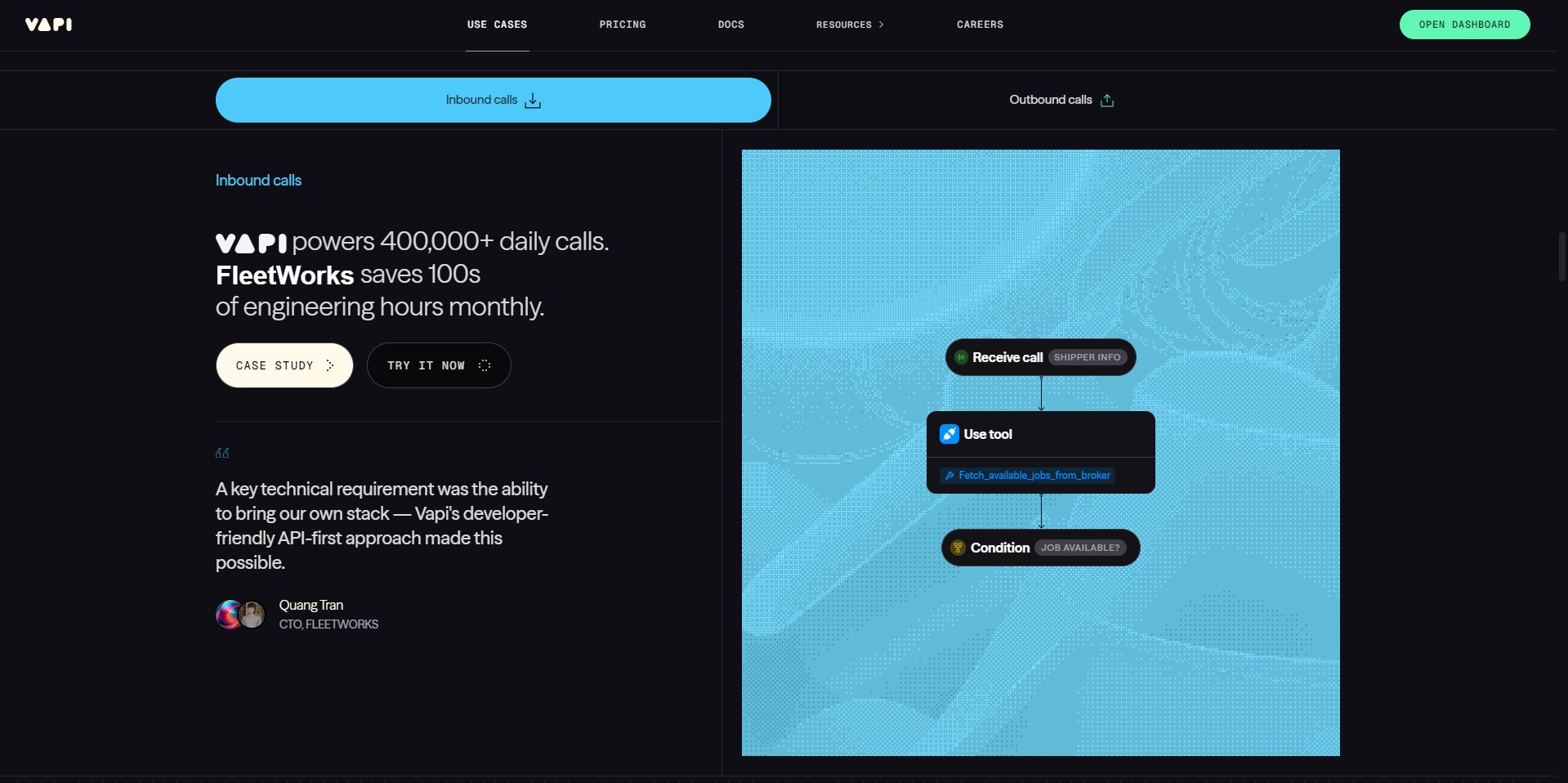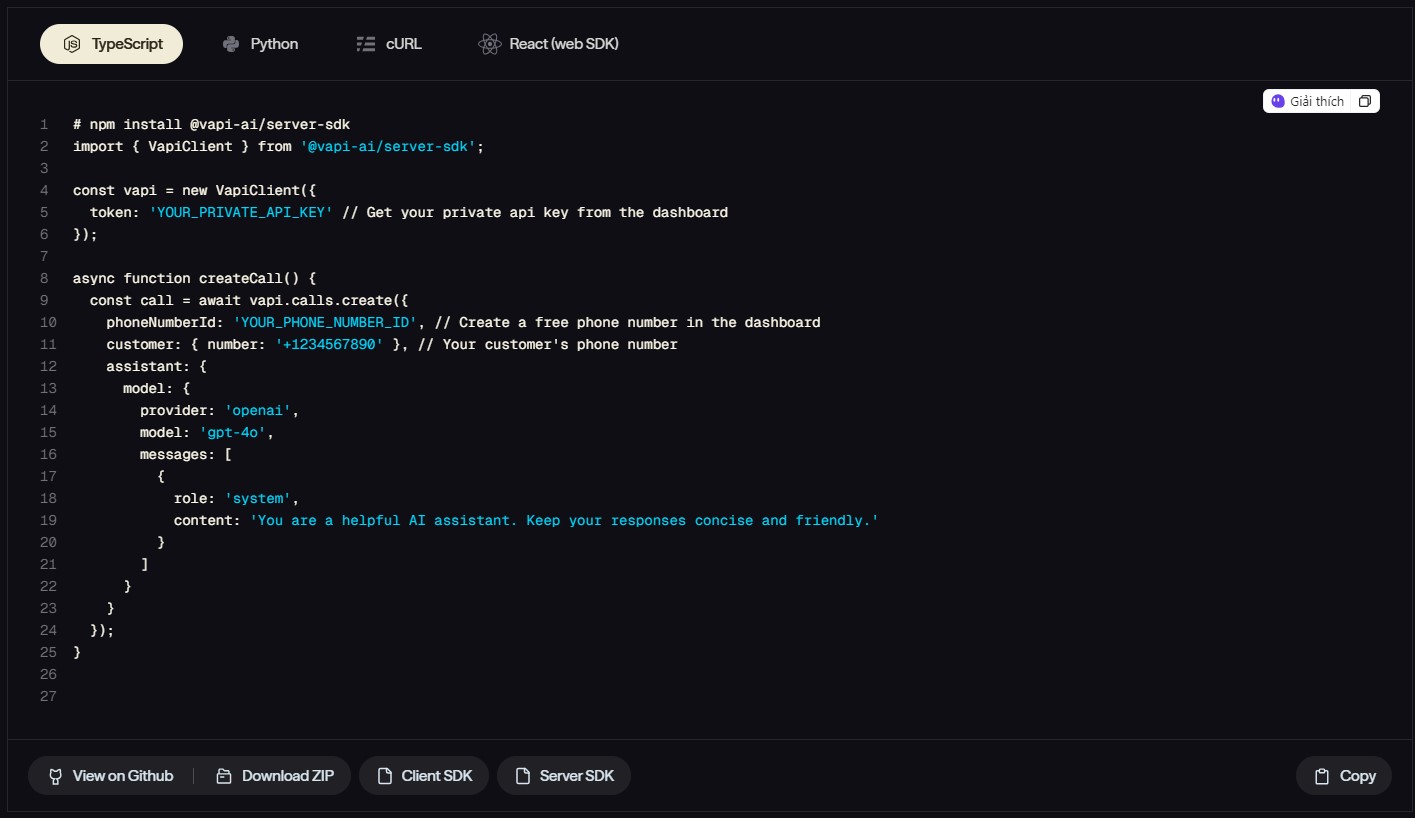Have you ever imagined an AI that can handle customer calls, book appointments, or even run a cold-calling campaign, all with a voice so natural it’s indistinguishable from a human?
If so, you’ve probably heard about Vapi AI. It’s been making waves in the developer community, promising to be the go-to platform for building conversational voice agents.
I’ve spent a significant amount of time with Vapi AI, pushing its limits, testing its performance, and comparing it to the competition. In this comprehensive review, I’ll share my genuine experience, diving deep into its core features, revealing its strengths and weaknesses, and helping you decide if Vapi AI is the right tool for your next project.
What Exactly is Vapi AI? A Deep Dive into its Core Technology
Understanding the Essence of Vapi AI
At its heart, Vapi AI is a cutting-edge platform designed to empower developers to create highly sophisticated voice AI agents. It’s not just a simple Text-to-Speech (TTS) or Speech-to-Text (STT) service.
It’s an entire ecosystem that orchestrates the complex flow of a human-like voice conversation. It handles the real-time audio infrastructure, integrates with various AI models, and enables agents to perform real-world actions.
The Scientific Framework: How Vapi AI Orchestrates a Conversation
The magic behind Vapi AI lies in its “Bring Your Own Models” (BYOM) philosophy and its real-time audio processing. Instead of building all the components from scratch, Vapi provides a robust framework that seamlessly connects industry-leading AI services.
- The Brain (LLMs): The conversational logic is powered by Large Language Models (LLMs) of your choice. Vapi AI lets you plug in powerful models like OpenAI’s GPT-4o, Anthropic’s Claude, or Cohere. This modularity allows you to tailor your agent’s personality and knowledge base with unparalleled control.
- The Ears (STT): To understand what the user says, Vapi AI relies on top-tier STT services like Deepgram. These services use advanced neural networks to convert spoken words into text with incredible speed and accuracy. The scientific principle here is a hybrid of acoustic modeling and language modeling, where the system predicts the most likely word sequence given the audio input.
- The Mouth (TTS): For a natural-sounding voice, Vapi AI integrates with services like ElevenLabs. These platforms employ sophisticated deep learning models that not only generate human-like voices but can also convey emotion and intonation. This is a significant leap from the robotic voices of the past, leveraging techniques from prosody and voice cloning research.
The synchronization between these components is what gives Vapi AI its signature sub-500ms latency. The platform processes audio chunks in real-time, feeding them to the STT model while simultaneously receiving and queuing responses from the LLM and TTS models. This is a marvel of real-time distributed computing.

Key Features that Make Vapi AI Stand Out
The Power of Vapi AI’s Function Calling
This is arguably Vapi AI’s most powerful feature. Function calling allows your voice agent to do more than just talk, it lets it interact with your backend systems. Imagine a customer calling to check on an order.
The AI can understand the request, call a predefined function to query your e-commerce database, and provide a real-time update—all within the same conversation. This turns a simple bot into a true automated team member.
The Unmatched Low Latency of Vapi AI
Latency is the silent killer of conversational AI experiences. A long delay between a user’s question and the AI’s response makes the interaction feel unnatural and frustrating. Vapi AI addresses this head-on with its low-latency infrastructure.
The platform is built for full-duplex communication, allowing the user and the AI to speak simultaneously without interruption, just like a real conversation. This is a crucial feature that elevates the user experience from a clunky bot to a smooth, human-like interaction.
Extensive Customization and Scalability
Vapi AI offers a playground of possibilities for developers. You can:
- Create custom voices using voice cloning features.
- Define custom tools for your agent’s unique needs.
- Integrate with CRMs, payment systems, and marketing automation platforms.
The platform is also designed for scalability. It can handle a few calls or millions of calls without a hitch, making it suitable for startups and enterprise-level businesses alike.
See more articles: Vapi AI Tool
A User’s Honest Look: My Personal Experience with Vapi AI
When I first started using Vapi AI, I was struck by its developer-first approach. The documentation is excellent, and the SDKs for Python and Node.js are straightforward. Setting up my first agent was a breeze, especially since I already had API keys for OpenAI and ElevenLabs.
I was truly impressed by the speed and fluidity of the conversations. I’ve tested numerous voice bots before, and the feeling of a natural conversation with a Vapi agent is a game-changer. There’s no awkward silence or stuttering, just a seamless back-and-forth. The ability to interrupt the AI mid-sentence and have it adjust its response immediately felt incredibly human.
However, a platform as powerful as Vapi AI isn’t without its challenges. The initial setup can be complex if you’re not technically inclined. You’re not just setting up one service, you’re orchestrating three or four different ones. And while the community support is growing, it’s not as robust as some more established platforms.
Vapi AI Pricing
Understanding the pricing model is crucial for any business, and Vapi AI‘s approach is designed for flexibility. It operates on a pay-as-you-go model, which is distinct from a fixed monthly subscription. Your final bill will be a combination of several factors, allowing you to scale your costs directly with your usage.
A Breakdown of Vapi AI‘s Cost Components
- Vapi AI Platform Fee: This is the core cost for using the Vapi platform itself, typically charged on a per-minute basis. This fee covers the infrastructure that handles the real-time audio stream, API orchestration, and call management.
- External AI Service Costs: This is where the flexibility of Vapi AI truly shines. Since you bring your own models (BYOM), you are responsible for the usage fees of each service you integrate. This includes:
- LLM Costs: Fees for using Large Language Models like OpenAI’s GPT or Anthropic’s Claude, usually billed per token.
- STT/TTS Costs: Fees for Speech-to-Text services (e.g., Deepgram) and Text-to-Speech services (e.g., ElevenLabs), typically billed per minute or per character/token.
- Telephony Provider Costs: To make and receive phone calls, you need a telephony provider like Twilio. These providers charge fees for phone numbers and call minutes, which are separate from Vapi’s platform fee.
Tiered Pricing Plans
In addition to the pay-as-you-go model, Vapi AI offers tiered subscription plans for businesses with higher volume needs:
- Agency Plan: Priced around $500 per month, this plan is ideal for agencies managing multiple client projects. It includes a specific amount of included minutes and centralized management tools.
- Startup Plan: Aimed at growing teams, this plan costs around $1,000 per month. It offers a larger allocation of included minutes and additional premium features.
- Enterprise Plan: For large organizations with high-volume requirements, this plan provides custom pricing, dedicated support, and advanced security features.
A Practical Cost Example
To put this into perspective, a typical 1-minute phone call using a standard AI model might cost you around $0.15. This breaks down into:
- Vapi’s platform fee: ~$0.05/minute.
- External AI services (LLM, TTS, STT): ~$0.10/minute.
This a la carte pricing model allows you to optimize costs for your specific use case. If your application requires a highly performant but expensive LLM for complex tasks, you can use it. If your primary goal is to handle high-volume, simple conversations, you can opt for more cost-effective models.
This level of control over your stack is a significant advantage, empowering you to build a cost-efficient solution tailored to your business needs.
See detailed price list of Vapi Ai here
Vapi AI vs. The Competition: A Head-to-Head Comparison
Choosing the right tool is a critical decision. Here’s how Vapi AI stacks up against its main competitors.
| Feature | Vapi AI | Voiceflow | Retell AI | Twilio (with DIY AI) |
| Target User | Developers, technical teams | Designers, marketers, non-technical users | Developers, technical teams | Developers |
| Core Philosophy | Modular & performant. Build your own stack. | All-in-one. Visual drag-and-drop. | Real-time voice API. Focus on core logic. | Communication infrastructure. Build everything yourself. |
| Latency | Extremely low (sub-500ms) | Good, but can be higher | Extremely low (sub-500ms) | Varies based on your own stack |
| Customization | Excellent. BYOM for LLM, TTS, STT. | Good. Pre-built integrations. | Very good. Similar to Vapi’s flexibility. | Highest. Complete control. |
| Ease of Use | Requires coding knowledge. | Very intuitive, no-code. | Requires coding knowledge. | Requires extensive coding and integration knowledge. |
| Pricing Model | Per-minute platform fee + external service fees. | Subscription tiers + usage fees. | Per-minute API usage fee. | Per-minute call fee + API usage fees. |
In-depth Comparison Breakdown
- Vapi AI vs. Voiceflow: This is a classic “developer-first” vs. “designer-first” debate. Voiceflow’s strength is in its visual workflow builder, making it easy to design conversational flows. It’s perfect for prototyping. Vapi AI, on the other hand, is built for scale and performance. Its low latency is a game-changer for phone-based applications where every millisecond matters.
- Vapi AI vs. Retell AI: Retell is a close competitor, sharing Vapi’s focus on low-latency voice APIs. The choice often comes down to personal preference for documentation, specific features, and pricing. Both are excellent choices for technical teams building serious voice agents.
- Vapi AI vs. Twilio: This isn’t an apples-to-apples comparison. Twilio provides the fundamental telecommunication building blocks (phone numbers, call routing). Vapi AI is the specialized AI layer that sits on top of this. While you could technically build a voice AI agent with Twilio, it would require significant effort to manage the real-time audio streams, STT, TTS, and LLM integrations. Vapi AI bundles all this complexity into a single, easy-to-use API.
See more articles: Unlock the Magic of Free Telephony with Vapi AI
Technical and Scientific Analysis: The Future of Conversational AI with Vapi AI
The technology behind Vapi AI isn’t just about making bots sound better, it’s about fundamentally changing how businesses interact with their customers. The convergence of real-time audio processing, advanced LLMs, and function calling is a major technological shift.
From a scientific standpoint, this reflects a move towards “embodied AI”. where the agent isn’t just a disembodied text window but an entity that can interact with the physical world through voice and action.
The research in this field, particularly in areas like prosodic analysis and speaker diarization, is what enables Vapi AI to handle complex conversations with multiple participants.
The impact on business is profound. From automating sales calls and customer support to revolutionizing healthcare and education, Vapi AI is a testament to what happens when cutting-edge research is translated into a practical, powerful tool.
Frequently Asked Questions about Vapi AI
1. Is Vapi AI free?
No. Vapi AI charges a per-minute fee for its platform usage. Additionally, you will be responsible for the costs of the external services you use, such as OpenAI, ElevenLabs, and your phone provider.
2. Is Vapi AI easy to use for beginners?
Vapi AI is a developer-centric tool. If you have some coding experience, you’ll find it very accessible. However, if you are a non-technical user, you might find the initial setup complex.
3. Can Vapi AI be used in languages other than English?
Yes. Vapi AI is language-agnostic. It supports over 100 languages, including Vietnamese, depending on the capabilities of the LLM and TTS/STT services you choose to integrate.
4. How does Vapi AI ensure data privacy?
Vapi AI complies with major security standards like SOC2, HIPAA, and PCI. ensuring that your data is handled securely and in compliance with industry regulations.

Conclusion
After using Vapi AI extensively, my conclusion is clear: it’s a best-in-class platform for developers looking to build advanced, real-time voice AI agents. Its low latency, incredible customization, and robust function-calling capabilities set it apart from the competition. While it might not be the most user-friendly option for non-technical individuals, its power and flexibility make it an invaluable tool for any serious AI project.
If you’re ready to build a voice agent that feels truly human, Vapi AI is the platform for you.
BigSpy AI Team


